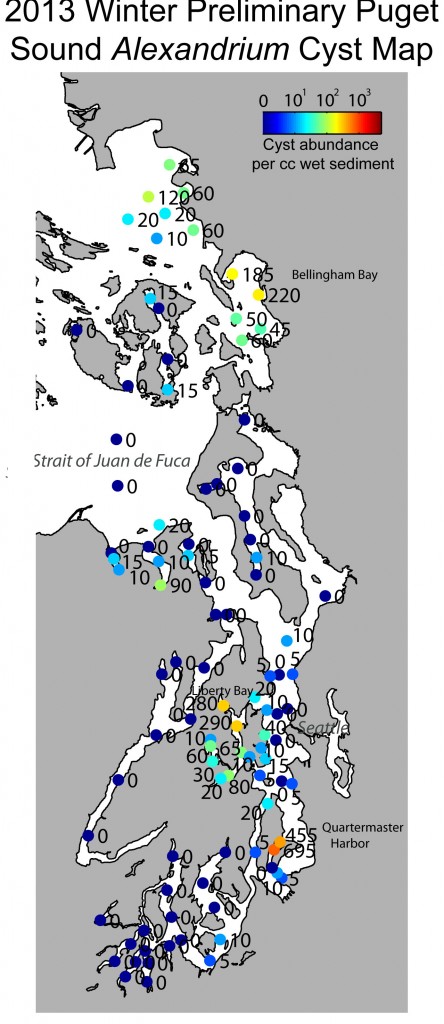
In March, the Puget Sound Alexandrium Harmful Algal Bloom (PS-AHAB) Project (funded by The National Centers for Coastal Ocean Science ‘sEcology and Oceanography of Harmful Algal Blooms (ECOHAB) Program )issued the2013 preliminary Alexandrium cyst map. This is part of PS-AHAB’s “just-in-time” information dissemination program to Puget Sound stakeholders to increase early warning capabilities for HAB events. Highest cyst concentrations,similar those found in 2012,were found in Quartermaster Harbor, Vashon Island in southern Puget Sound, Washington.
The harmful algae species Alexandrium catenella produces a suite of potent, at times deadly, neurotoxins that accumulate in shellfish which poses a significant public health and economic problem in Puget Sound. It produces seed-like cysts that sink to the bottom of the Sound and bloom the next spring when the water warms up.
Counting and mapping the abundance of these cysts may provide advanced warning of A. catenellablooms. No relationship between locations with high cyst abundances, shellfish toxicity in Puget Sound, and the number of cysts required to initiate a bloom has been identified to date . Questions like this form the basis of research being conducted by the PS-AHAB team for developing a future operational Puget Sound Alexandrium forecast capability. For more information, contact Quay.Dortch@noaa.gov.
